
Krishna Janmashtami is one of the most popular festivals, which is celebrated with zeal and fervor all over the country. It is also known as Janmashtami, Ashtami Rohini, Shree Jayanti, Gokulashtami, Krishnashtami, Dahi Handi and Saatam Aatham.
Krishna is one of the most adored and worshipped God in Hinduism. He is worshipped as the eighth manifestation of Bhagwan Vishnu. He is the God of protection, sympathy, tenderness, joy and love.
According to the Lunisolar Hindu calendar, Hindus celebrate Krishna’s birthday every year on Krishna Janmashtami, which is at the end of August or the beginning of September as per the Gregorian calendar.
He is a central figure in the Mahabharata, Bhagavata Purana, Garuda Purana, Padma Purana and Bhagavad Gita.
In the Padma Purana (Uttara-khanda 193.3)
Puranesu tu sarvesu srimad bhagavatam param|
yatra prati-padam krsno giyate bahudharsibhih||
'Of all the puranas, the Bhagavata is the greatest. In every line the sages glorify Sri Krishna in various ways.'
The name Krishna has several meanings like dark colored/skinned one. Sri Krishna, Draupadi and Vyasa are known as “Krishna”, because they were dark complexioned. Krishna also means one who attracts.
Krishna also means one who harvests - He is thus the Kshetrajna, the farmer, horticulturist, gardener who knows when a particular crop or plant is ripe. Metaphorically he is the one who nurtures our consciousness and when it is ripe blesses with Moksha
Why is Krishna Janma (Birth of Krishna) known as Janmashtami?
The word ‘Janma’ means birth, and ‘Ashta’ in Sanskrit means eight. The number 8 has much significance, as Shri Krishna was the 8th avatar (incarnation) of Bhagwan Vishnu, He was the 8th child born to Devaki Mata, and he was born on the 8th day of the Krishna Paksha in the Holy month of
Shravan
.
When Is Krishna Janmashtami in 2026 (Tithi & Muhurat)?
This year the Krishna Janmashtami falls on
Friday, September 4, 2026
Janmashtami Tithi Timings
5253 rd Birth Anniversary of Lord Krishna
Krishna Janmashtami on Friday, September 4, 2026
Nishita Puja Time - 12:14 AM to 01:01 AM, Sep 05
Duration - 00 Hours 46 Mins
Dahi Handi on Saturday, September 5, 2026
Parana as per Dharma Shastra
Parana Time - after 06:24 AM, Sep 05
On Parana Day Ashtami Tithi and Rohini Nakshatra got over before Sunrise
Parana as per modern tradition in society
Parana Time - after 01:01 AM, Sep 05
at many places in India, Parana is done after Nishita i.e. Hindu midnight
Mid Night Moment - 12:37 AM, Sep 05
Chandrodaya Moment - 12:07 AM, Sep 05
Ashtami Tithi Begins - 02:25 AM on Sep 04, 2026
Ashtami Tithi Ends - 12:13 AM on Sep 05, 2026
Rohini Nakshatra Begins - 12:29 AM on Sep 04, 2026
Rohini Nakshatra Ends - 11:04 PM on Sep 04, 2026
Participate in Group Krishna Janmashtami Mahapuja being performed by Rudra Centre Puja Services on the auspicious occasion of Krishna Janmashtami on
Friday, September 4, 2026
and seek the blessing health, wealth, prosperity, protection and spiritual growth.
Rudra Centre has 250+ qualified Karm-Kandi Pandits from Kashi specially curated by Sakhashree Neeta who regular perform Online Pujas, Yagnas, Homas & Paath for Devotees globally.
Krishna Janmashtami Mahapuja Service Includes: Kalash Sthapana, Panchang Sthapana(Gauri, Ganesh, Shodash Matrika, Navgraha, Sarvotabhadra), 64 yogini Pujan, Shetrapal Pujan, Swasti Vachan, Sankalpa, Ganesh Laxmi Abhishek and Pujan, Navgraha Pujan, Pujan of major Gods and Goddesses, Lord Krishna Abhishek and Pujan, Placing and worship of Bal Gopal in Paalna (swing), Japa of Krishna Mantra 11,000 times, recitation of Nandakumar ashtakam 51 times, Srimad Bhagwad Gita Paath, Shree Krishna Stutis and Strotras followed by Puja, Aarti and Havan.
No. of Priests:
9
Date: Friday, September 4, 2026
Time:
9:00 am to 5:00 pm IST
Puja would be Live Streamed & multiple videos of the sankalp, puja, mantra chanting and homa would be sent to you along with the photographs of the Puja ritual.
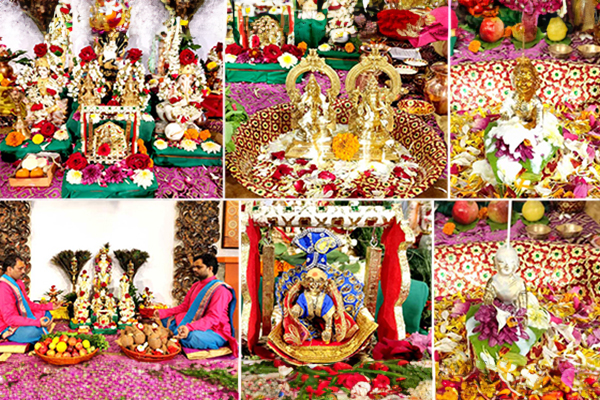
Click Here to Book Krishna Janmashtami Mahapuja
Why do we celebrate Krishna Janmashtami?
Shri Krishna is one of the main deities in Hinduism. We celebrate the Janmashtami festival to rejoice in the birth of Shri Krishna. He is known for his compassion, love, righteousness, diplomacy and quick wit. Lord Krishna is depicted as the main character in ancient holy scriptures like the Puranas, Bhagavad Gita, Mahabharata, and the Bhagavata Purana. In the North, Shri Krishna is worshipped in almost every household.
Janmashtami is celebrated with great devotion and reverence, especially the Vaishnavas as it marks the birth of Shri Krishna, who is seen as a symbol of divinity, love, and righteousness. His life and teachings inspire devotees to lead a life based on Dharma (Righteousness), Karma (Action), and Bhakti (Devotion).
Post-midnight, the idol of Shri Krishna (Bal Gopal) is bathed, adorned with new clothes, and put in a cradle. Devotees sing devotional songs about Krishna, especially about the newborn beautiful baby Krishna. Offerings of sweets, flowers, and flower garlands are made with joy, Bal Gopal (Baby Krishna) is welcomed. Many devotees paint tiny footprints outside the main entrance leading to their house, which signifies the welcome of Krishna to step into the houses of His devotees. Devotees break their fast by sharing the sweets and fruits which were offered to Krishna as Prasad. The Vaishnava community all over India celebrates Krishna Janmashtami with complete dedication.
What is Masik Janmashtami?

Masik Krishna Janmashtami is celebrated on the Ashtami Tithi of Krishna Paksha every month. On this day, devotees worship Shri Krishna and observe a fast in his name.
Following are the Masik Krishna Janmashtamis’ after Krishna Janmashtami:
|
Month as per Hindu Calendar |
Month as per Gregorian Calendar |
Time |
|---|---|---|
|
Magha, Krishna Ashtami |
January 10, 2026, Saturday |
Begins - 08:23 AM, Jan 10
Ends - 10:20 AM, Jan 11 |
|
Phalguna, Krishna Ashtami |
February 9, 2026, Monday |
Begins - 05:01 AM, Feb 09
Ends - 07:27 AM, Feb 10 |
|
Chaitra, Krishna Ashtami |
March 11, 2026, Wednesday |
Begins - 01:54 AM, Mar 11
Ends - 04:19 AM, Mar 12 |
|
Vaishakha, Krishna Ashtami |
April 9, 2026, Thursday |
Begins - 09:19 PM, Apr 09
Ends - 11:15 PM, Apr 10 |
|
Jyeshtha, Krishna Ashtami |
May 9, 2026, Saturday |
Begins - 02:02 PM, May 09
Ends - 03:06 PM, May 10 |
|
Adhik Jyeshtha, Krishna Ashtami |
June 8, 2026, Monday |
Begins - 03:24 AM, Jun 08
Ends - 03:23 AM, Jun 09 |
|
Ashadha, Krishna Ashtami |
July 7, 2026, Tuesday |
Begins - 01:24 PM, Jul 07
Ends - 12:21 PM, Jul 08 |
|
Shravana, Krishna Ashtami |
August 5, 2026, Wednesday |
Begins - 08:42 PM, Aug 05
Ends - 06:52 PM, Aug 06 |
|
Bhadrapada, Krishna Ashtami |
September 4, 2026, Friday |
Begins - 02:25 AM, Sep 04
Ends - 12:13 AM, Sep 05 |
|
Ashwina, Krishna Ashtami |
October 3, 2026, Saturday |
Begins - 07:59 AM, Oct 03
Ends - 05:51 AM, Oct 04 |
|
Kartika, Krishna Ashtami |
November 1, 2026, Sunday |
Begins - 02:51 PM, Nov 01
Ends - 01:10 PM, Nov 02 |
|
Margashirsha, Krishna Ashtami |
November 30, 2026, Monday |
Begins - 12:11 AM, Dec 01
Ends - 11:13 PM, Dec 01 |
|
Pausha, Krishna Ashtami |
December 30, 2026, Wednesday |
Begins - 12:36 PM, Dec 30
Ends - 12:32 PM, Dec 31 |
What to Do on Krishna Janmashtami:
Janmashtami can easily be celebrated either at a Hindu temple or at home through fasting, singing, decorating, and bathing the idol of Krishna. You can do the following to celebrate Krishna Janmashtami:
- Taking Part in Temple Festivities
- Begin fasting in the morning and keep it till midnight.
- Participate in group devotional songs and chants.
- Prepare flower garlands and other decorations for the temple or home.
- Read from religious scriptures and watch religious reenactments.
- Bathe and clothe the Krishna idol with other devotees.
- Witness the unveiling of the Krishna idol at midnight.
- Prepare traditional foods to eat and to offer to Krishna.
- Hold a worship ceremony at midnight.
How To Celebrate Krishna Janmashtami At Home. (Krishna Janmashtami Puja Vidhi)
- Krishna Janmashtami celebrations can be performed beautifully at your home too. Krishna Janmashtami is performed at midnight as Lord Krishna was born on the night, which was windy, dark and stormy.
- Wake up early in the morning during the Rohini Nakshatra, which starts at 6:39 am.
- Take a bath and wear new clothes.
- Clean the house and decorate it. At the entrance gate, place a Toran and decorate with Rangoli.
- Draw tiny footsteps of Bal Gopal leading inside the house.
- Decorate your puja altar or Mandir also.
- Fast the whole day. You can keep a strict fast without water, or do a ritual with fruits and sattvic items like sabudana khichdi, kuttu ka atta, panjiri, milk products, etc.
- Krishna’s birth is at midnight. So, start your puja then.
- Place the idol of Lord Krishna, light a ghee lamp, place a cradle (not mandatory), install a Vishnu Yantra beside the idol.
- Place a bunch of Tulsi leaves beside the idol of Lord Krishna. At the stroke of midnight at the given tithi, give holy bath to the idol of Krishna with some Panchamrita.
- Do Abhishek of idol of Krishna, with milk, curd, ghee, honey and Gangajal.
- Decorate the idol with colorful embellished clothes, a peacock feather, flute and offer flowers.
- Offer him sandal paste, perfumes and flowers.
- Offer him butter, makundana , and tulsi.
- For prasad make kheer, milk sweets, panchamrit and his favourite dhaniya panjiri.
- Put him on a swing.
- Sing Bhajans.
- Play the Shankh sound and bells to herald his arrival.
- Chant his mantra “Om Kleem Krishnaye Namah” 108 times.
- Read the Bhagwad Gita and Bhagwad Purana from the 10th chapter.
- Recite stories of his life.
- You can break your fast after this ritual.
- You can also chant Vishnu Strotram and meditate with the mantra “Om Namo Bhagavate Vasudevaya”
- You can wear a Ten Mukhi and a Nineteen Mukhi Rudraksha beads as they are ruled by Shri Krishna and Narayana, respectively.
- Wearing these Rudraksha beads on this day purifies your inner self and strengthens your willpower. They work like a shield on one's body, and the wearer gets immense protection from negative energies, evil eye and psychic attacks.
Puja Samagri / Pooja Items for Krishna Janmashtami
One just needs to look at the Janmashtami Tithi and ensure that the Krishna Janmashtami puja is performed at the correct time. To perform the Krishna Janmashtami puja at home, you require:
- Krishna idol
- A cradle or Palana for Bal Gopal
- Incense sticks
- Ghee
- Fresh white and blue flowers
- Fruits
- Diya
- Fresh hung curd
- Fresh flower garland
- Colorful embroidered clothes
- Panchamrit and prasad.
Krishna Janmashtami Mantra:
-
Moola Mantra:
“Om Krishnaya Namaha “
Meaning: Salutations to the Lord Krishna: -
Krishna Gayatri Mantra:
This mantra brings in high energy for activities and success in the job.
“Aum Devkinandanaye Vidmahe Vasudevaye Dhi-Mahi Tanno Krishna Prachodayat Aum “ -
Vishnu Mantra:
“Om Namoh Bhagwate vasudevay” - You can also read Krishna Ashtakam.
Krishna Janmashtami Vrat Vidhi (Fasting Ritual):
Start your day with a bath and wear clean clothes. Sit in your puja area, take water in your hand, and vow to observe the fast with devotion to Shri Krishna.
Choose your fasting type: a complete fast (no food or water), a fruit and milk fast (only fruits, milk, and water), or a partial fast (avoiding grains and certain foods).
Refrain from consuming grains, pulses, rice, and certain spices. Stick to sattvic (pure) foods like fruits, dairy, and nuts if you’re not on a complete fast.
Spend the day in devotional activities like reading the Bhagavad Gita, chanting Krishna mantras, and singing bhajans. This helps keep your focus on the spiritual aspect of the fast.
Perform the main puja at midnight, marking the birth of Shri Krishna. After the puja, you can break your fast with the prasad (food offered to Krishna) and other light foods.
What to Offer on Krishna Janmashtami?
A special rule is maintained while making the Prasad or the food for Shri Krishna. As far as possible, fresh and natural ingredients are used for cooking.
Only vegetarian food is offered to the God, food must be Saatvik i.e. no packaged food, and no- meat, fish, eggs, onion, garlic, turnip, brinjal.
Krishna Janmashtami Vrat Katha (Story)

According to the ancient Holy Scriptures, Krishna Janmashtami story is worth knowing as the birth of Krishna is an adventurous and surprising event. In ancient times there was a malicious King named Kansa. He had forcefully taken over the throne from his noble king of Mathura, Ugrasen.

King Kansa along with a few other demon Kings tormented Mother Earth. Tired of the torture, Mother Earth once took the form of a cow and visited Lord Brahma. She narrated her plight to Brahma and asked him to help her. Brahma in return turned towards Bhagwan Vishnu for help. After listening to the plight of Mother Earth, Bhagwan Vishnu assured her that he would put an end to Kansa’s rule by taking birth as Shri Krishna.
Meanwhile, to increase his kingdom and gain more power, King Kansa married his sister Devaki with Vasudeva, the ruler of Yadu. With a wicked intention of taking over King Vasudeva’s clan, King Kansa made grand arrangements to gift his sister extravagant endowments to impress and gain trust of ruler Vasudeva. But almighty had some great plans aligned. After the marriage was done, a fortune teller told King Kansa that he would be killed by one of Devaki’s offspring.
Terrified with this news, King Kansa raised his sword to slay his sister, but King Vasudev pleaded to Kansa and asked him not to Kill Devaki. King Vasudev promised Kansa that he would kill each of his and Devaki’s children as soon as they were born. Kansa did not kill Devaki but instead, imprisoned her and her husband Vasudeva. As promised by Vasudeva, the couple would offer their offspring to King Kansa as soon as it was born, and Kansa would kill the offspring with absolute cruelty.

When Devaki delivered her eighth child, King Vasudeva woke up to the bright light and the heavenly voice of Bhagwan Vishnu, who told him that his eighth child was an incarnation of Shri Vishnu himself, and this child would put an end to the reign of Kansa.
Bhagwan Vishnu’s voice guided Vasudeva to take the newly born Krishna across the River Yamuna and to safely place him in the house of the Gopis tribe leader, Nandraja, who lived there with his wife Yashodha. Many hurdles came as Vasudeva was carrying Krishna over his head in a cane basket while crossing the river. Finally, as instructed, Vasudeva successfully placed Shri Krishna in the house of Nandraja and, in return, took Nanda's daughters.

As soon as Kansa heard that Devaki had given birth to a child, he rushed to the prison and found out that it was a baby girl. Devaki pleaded not to kill the child, as, according to the prophecy (Aakashwani), her son would kill Kansa. Ignoring her plight, Kansa leaned forward to lift the child. As soon as he approached the baby, it turned into Maa Durga and warned Kansa that his end had already come, and the blessed one was already born. Goddess Durga said that Kansa would be punished for all his wrong doings. Soon after saying this, Goddess Durga disappeared.
This is how Kanha, Shri Krishna, grew up in Gokul in the Gopa tribe with foster parents Nandraja and Yashodha, away from the chaos of Mathura. After his pastimes in Gokula, Shri Krishna, along with his brother Balrama, eventually killed the arrogant Kansa.
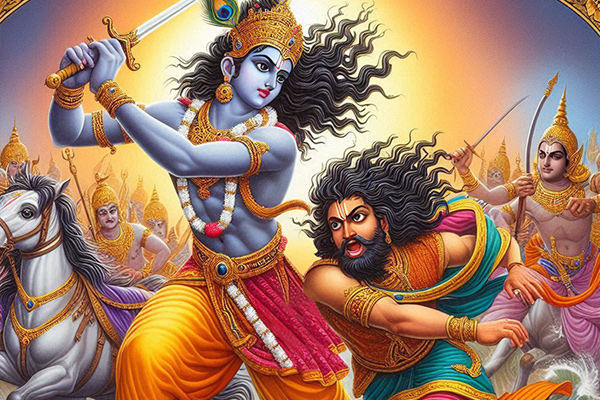
Dahi Handi is another important aspect of this festival that is observed on the second day of Janmashtami. As a kid Shri Krishna was named 'Makhanchor' or the one who steals butter. He used to steal butter from every household of Gokul. Dahi Handi is an event where the same butter stealing activity of Krishna is narrated. An earthen pot or Handi is filled with butter, clarified butter or ghee, dry fruits, and milk is suspended at a considerable height with the help of ropes. All the local young guys gather to make a human pyramid and climb on each other to reach the Handi and break it. This is an activity that teaches how to efficiently work as a team. Milk is the essence of nutrition, and curd is the refined form of milk. When the curd is stirred, butter forms and floats on top. It is not heavy, but light and nutritious. When our intelligence is stirred, it becomes like butter. Then knowledge arises in the mind, and a person builds up in the self. Even if he lives in this world, he remains detached, and his heart will not be disappointed with the things or behaviors of the world. Makhanchor is a symbol depicting the glory of Lord Krishna’s love. This is the charm and skill of Lord Krishna, who can steal even the most introverted people's thoughts.
Shri Krishna Timeline
Birth

Krishna was born in the Yadava clan of Mathura by Devaki and her husband Vasudeva. Devaki's brother is a tyrant named Kansa. At Devaki's wedding, according to Puranic legend, Kansa was told by a fortune teller that Devaki's child would kill him. It is portrayed as an Akashwani announcing Kansa's death. Kansa arranged to kill all of Devaki's children. When Krishna was born, Vasudeva secretly took the baby Krishna across the Yamuna River and exchanged with him. According to the legend of the Panagia, when Kansa tried to kill the newborn, the exchanged baby appeared as the Hindu goddess Yogmaya, warning him that his death had reached his kingdom and then disappeared. Krishna grew up with Nanda and his wife Yashoda near Mathura. According to these legends, Krishna's two brothers and sisters also survived, namely Balarama and Subhadra. Krishna’s birthday is called Krishna Janmashtami.
Childhood And Adolescence

Krishna's childhood and youth legend described him as a cowherd, a prankster boy, earning him the nickname Makhan Chor (Butter Thief), and the protector who stole the hearts of the people of Gokul and Vrindavan. For example, the text states that Krishna raised Govardhana Mountain to protect the residents of Vrindavan from devastating rain and floods.

Other legends describe him as the magician and playful lover of the Gopis (milkmaids) of Vrindavan, especially Radha. These metaphorical love stories are called Rasa Lila and are romanticized in the poems of Jayadeva, author of Gita Govinda. They are also at the core of the traditional development of Krishna Bhakti who worships Radha Krishna.
Krishna's childhood embodies the Hindu concept of Lila, where play is for fun and enjoyment, not for sports or profit. His interaction with the Gopis in the Rasa-Lila is an example. Krishna is playing his flute, and no matter what they are doing, the Gopis will immediately come to the Yamuna River to sing and dance with him. Even those who cannot be there in person can join him through meditation. He is the spiritual essence and eternal love in existence, and the Gopis metaphorically represents the Prakriti material and impermanent body.
Adulthood

The legend of Krishna then describes his return to Mathura. After quelling Kansa's several assassination attempts, he overthrew and killed the tyrant, his uncle Kansa. He restored Kansa's father Ugrasena as the king of Yadavas and became the chief prince in the court. In a version of the Krishna story, as Shanta Rao recounted, after the death of Kansa, Krishna led Yadavas to the newly built city of Dwaraka. Since then, Pandava has risen. Krishna became friends with Arjuna and other Pandava princes of the Kuru Kingdom. Krishna plays a key role in Mahabharata.
Bhagavata Purana described the eight wives of Krishna -Rukmini, Satyabhama, Jambavati, Kalindi, Mitravinda, Nagnajiti (also known as Satya), Bhadra and Lakshmana (also known as Madra) appearing in sequence. This is a metaphor in which each of the eight wives symbolizes different aspects of him. Vaishnava’s texts mention that all Gopis are Krishna’s wives, but this is a spiritual relationship. The spiritual symbol of Krishna is full of love for everyone who devotes himself to him.
In the Hindu tradition related to Krishna, he most often appears with Radha. In Hindu tradition, all his wives and lover, Radha, are the incarnation of the goddess Lakshmi, Vishnu's consort.
Kurukshetra War and Bhagavad Gita

According to the epic 'Mahabharata', Krishna became Arjuna's mentor in the Kurukshetra War, but on the condition that he personally would not raise any weapons. On the battlefield, he saw that the enemies were his family, his grandfather, his cousins and his relatives. Arjuna was moved. He said that his heart would not allow him to fight and kill them. He would rather give up the kingdom and put down his Gandiv (Arjuna's bow). Then Krishna convinced him in all the ways possible, yet Arjuna was not convinced. Krishna then had to reveal his formidable form, revealing his true nature of the ultimate truth, consciousness, bliss. Showing him that he himself is the creator, the operator, the destroyer, the entire cosmos. That the one who is killing in the battlefield is him, and the ones being killed are also him. Arjuna is here just playing his part that is already determined. Then after orating the entire Bhagavad Geeta, Arjuna realized that he is merely a channel, and he must take the required action.
When a person faces a war between good and evil, Krishna advises him on the nature, ethics and morals of life, the impermanence of matter, the eternity of soul and goodness, duties and responsibilities, and the essence of true peace and bliss. And different types of yoga to achieve this state of bliss and inner liberation. This dialogue between Krishna and Arjuna takes the form of a discourse called 'Bhagavad Gita'.
Death And Ascension

According to Indian literature, the legendary Kurukshetra War resulted in the death of all Gandhari's 100 sons. After Duryodhana's death, when Gandhari and Dhritarashtra visited Kurukshetra, Krishna visited Gandhari to express condolences, as described by Stree Parva. Feeling that Krishna deliberately did not end the war, Gandhari said angrily and sadly: “You are indifferent to Kurus and Pandavas when they kill each other. Therefore, O Govinda, you will become the killer. My own relatives!” According to Mahabharata, the Yadava people broke out in a battle during a festival and eventually, they killed each other. A hunter named Jara mistakenly took Krishna for a deer and shoots an arrow that injured and killed Krishna, then Krishna forgave Jara and died afterwards. The pilgrimage (tirtha) site in Bhalka, Gujarat, marked the place where Krishna is believed to have died. Chapter 31 of Volume 11 of the Bhagavata Purana stated that after Krishna’s death, due to his yogic absorption, he returned directly to his transcendent abode. The waiting Gods, such as Brahma and Indra, could not trace Krishna's path when he left his human incarnation and returned to his abode.
Philosophy Of Shri Krishna
An exemplary- a leader, a hero, a protector, a teacher, a philosopher and a friend: all in one. Krishna was one of the most pragmatic Lords of all times; the best manager and a leader who imparted valuable lessons to all. He propagated the theory of Bhakti and good Karma in Bhagavad Gita.
His teachings are infinite; his names and forms are innumerable. Shri Krishna, who is an entity unto itself, is a proven charismatic leader and manager. He imparted his teachings through his exemplary life and actions. Let's reflect and take a glimpse at the illustrious facets of Shri Krishna.
He expressed himself in certain extra-human or supernatural ways and was therefore endowed with extraordinary qualities.

Krishna is an embodiment of all divine potentials (whether hidden or not) and what befitting occasion of Janmashtami to talk about Krishna. Celebrated with great fervor across the nation, Krishan Janmashtami symbolizes imprisonment in the worldly illusions, and incarnation of Bhagwan Vishnu symbolizes vanquishing of evils (outside and within) leading to edification and peace.
Lord Krishna, through his life demonstrated how to live a life in entirety and to continue doing right, without having attachment towards the outcome of those actions and most importantly, never hurt anyone.
We can understand Shri Krishna's philosophy as follows:
Humanitarian Purpose:
Krishna's extraordinary qualities were seen when he was only a child. There is a purpose in everyone's life and the purpose of those whom we consider to be Avatars or Siddhas or Yogis is a humanitarian one. The aim is to improve the quality of life, to indicate a way, a process, a direction by which one can attain harmony, satisfaction and contentment. The central theme of Krishna's life was not destruction of the wicked or protection of the pious.
Establishment of Dharma: The focus of Krishna's life was the establishment of Dharma. Dharma is identified as Purushartha. Dharma is not a belief, a concept or a religion; Dharma is action, effort. This action and effort should lead one to experiencing the divine nature that is dormant in every being. Krishna wanted to establish this concept of Dharma, right from the time he became self-aware.
In the festival of Ganga Dussehra , the women float candles or Diyas on the river as a form of worship. There is a story that when Krishna was very young, he accompanied his mother, Yashoda, to the banks of the river to observe this ritual. When he saw people floating little candles on the river, he entered the water himself and every time a diya or candle floated by, he would pick it up and put it on the riverbank.
When his mother asked him what he was doing, he replied, “Mother, all the candles that come near me I pick up and put on the shore. My little hands can't reach the candles that are in midstream or near the other shore, but any diyas that floats towards me I pick up and put on the shore.”
Diyas or lights represent the individual souls who are floating in this stream of Samsara. Those who are too far away go unattended, but those souls which float towards the godly nature are immediately picked up and saved. Coming close to the proximity of the Divine is the purpose of dharma, nothing more.
Be Involved with Karma: Teachings that can bring us closer to God change from age to age, from civilization to civilization. In Satya Yuga, the method was Tapasya. In this age, known as Kali Yuga, Buddha, Mahavir, Christ, all the saints and sages, have said that the form of religion should be love and compassion. Being compassionate, loving and kind towards others was the teaching of these sages for this age. However, what would the teachings have been in another time, in the past, when people had a different kind of lifestyle and were living according to the precepts of Dharma? The relevant teaching for that age, as enunciated by Krishna and as enunciated in the time of Rama, was involvement with Karma. Rama did not say to be compassionate; it was part of the natural expression of that society. There was no poverty, everyone had plenty. There was no need to become charitable. People were charitable, compassionate, loving and kind by nature; it was part of their personality expression.
Today we are not charitable, loving and kind by nature; we are by our nature creating an egocentric and self-centered society. So, the teachings must change according to the time and mentality of the people who form a society.
Perfection in Action:
This belief holds true even today. All the masters, after they have attained the highest realization, have involved themselves in hard Karma. Buddha, after attaining Nirvana, plunged himself into Karma. He did not isolate himself from the world. Mahavir, after attaining Nirvana, plunged headlong into Karma. He did not seek the isolation of a mountain top. Ramana Maharishi, after attaining moksha, plunged himself into Karma. That has been the trend followed by every seer and saint in this age, whether it is Maharishi Dayananda or Ramakrishna Paramahamsa or Swami Vivekananda or Swami Sivananda or Swami Satyananda.
When we see these living examples of people who have attained realization again involving themselves in action, then we must think, because the common belief is that nothing needs to be done after realization, that one is free to retire to the mountains and lead a solitary life. It is possibly because of this misunderstanding that Sadhakas have been unable to advance in spiritual life. We isolate ourselves by creating walls of silence around us, by meditating for ten or twenty hours a day. But that has no meaning because the transformative experience of life lies in Karma, not in meditation.
Karma, not meditation, has been the central philosophy of spiritual life. If followed sincerely, the state of meditation can be achieved within one year. Whenever the mind goes through difficult times, conflicts, tensions, anxiety and stress practice meditation and you will find relief. It will make the surface of the mind tranquil and peaceful. But the seeds of Karma, the weeds of Karma, are deep-rooted and cannot be uprooted through meditation alone.
For this, the central theme in Yoga and in other spiritual philosophies is Karma Yoga. When you are the master of Karma, you become a Karma Yogi. When you are under the influence of Karma, you are subject to Karma.
This was the message Krishna gave Arjuna and through Arjuna to us. To transform and harmonize life, to understand the secrets of life, to understand your relationship with other beings and with the universe, with the cosmos, with creation and with God, you need to understand how you interact with the karmas. It is a very simple thought that Krishna conveyed, yet it is one of the most difficult to understand.
Develop Love and Compassion:
Another theme in the teachings of Krishna is never to be under stress. Krishna was a compassionate person. No other person in history has been as compassionate. Krishna had eight wives to whom he was legally married, and he provided social protection for the 16,000 wives so they could live in dignity. Krishna radiated love. When we speak of love we always think of carnal, physical love, but love does not mean a physical relationship. These are very gross definitions of love. Real love is transcendental. Radha was supposed to be Krishna's lover. She was many years older than he was and married to someone else, yet today we do not remember the names of Krishna's other wives. In India, songs of love are dedicated to Radha and Krishna to show respect for the love that existed between them. We bow our heads to that idea, that belief, that philosophy. The force of her love was such that her physical body merged with the statue of Krishna. Can we call this physical love? Can we understand such an expression of love? No, we cannot. Yet when we hear about it, we respect it and bow our heads in reverence. Such love is transcendental.
Krishna's teachings were to develop transcendental love and to be involved with Karma. If we can understand these two concepts, we will find that many of our doubts about life, spirituality and Dharma can be clarified.
The Meaning of Peacock Feathers On Shri Krishna's Head

A king is responsible for all his subjects. He assumed these responsibilities in the form of a crown. But Krishna performed all his duties easily-like a game. Just like mothers never feel that taking care of their children is a burden, Shri Krishna will not feel burdened because of his responsibilities, he can easily take on these responsibilities in the form of peacock feathers (also very light) full of different colors. Shri Krishna is the charming and happy stream in all of us. When there is no irritability, worries, or desires in mind, only we can achieve deep relaxation. Only in deep relaxation can Krishna be born.
Today, on Krishna Janmasthami, we celebrate the birthday of this extraordinary child who was later recognized as an Avatar. We also acknowledge the teachings we have received from this extraordinary being, and we take a Sankalpa to understand, if not to work upon, at least to understand the teachings, the guidelines and the path which has been shown us through inspirational and uplifting examples from his life.
Janmashtami / Gokulashtami Celebration in India
In Maharashtra, Janmashtami is also known as Gokulashtami and celebrated as Dahi Handi. The Dahi Handi is a replica of Krishna's childhood mischief of stealing his favorite, butter, from the pots of Gopis. Various groups of people travel to different localities in their cities/towns to form human pyramids and attempt to break the earthen pot, which is filled with curd, milk, butter, fruit, and water and hung at a challenging height. The enthusiasm and mood are vibrant. Devotees also worship Lord Krishna and sing His praises.
Gujarat And Rajasthan:

Shri Krishna is believed to have set up his kingdom in Dwarka in Gujarat. In Dwarka, on Janmashtami, Makhan Handi, which is like the Dahi Handi tradition, is celebrated.
Devotees visit the Nathdwara or Dwarkadhish temple. Folk dances and bhajans of Krishna are sung at temples. In Gujarat and Rajasthan, Dayaram's light-hearted poems are popularly recited and sung. Farmers of Kutch, in Gujarat, decorate their bullock carts, sing and dance in happiness and organise Lord Krishna processions.
Uttar Pradesh:
In North India, the celebrations of Krishna Janmashtami are at their highest in the Braj region, like in Mathura, where Sri Krishna was born, and in Vrindavan, where the Lord grew up, as per Hindus. The temples of Krishna are decorated with lights, and devotees throng the temples to immerse themselves in Krishna's devotion or bhakti. Till the midnight hour, when Lord Krishna is said to have been born, devotees wait in the temples to welcome the Lord with the chanting of Lord Krishna's name and bhajans. The tradition of 'Raslila' performances by groups in the Northern states of India is popular on Krishna Janmashtami, and devotees throng to see them. Songs of Sri Krishna's childhood pranks and Radha-Krishna's love story, accompanied by musical support, are an integral part of the Raslila dance and drama performances, which are enjoyed by the enthralled audience who clap to the beats of the songs in participation. The meaning of Raslila is' lila '-play of delight and Ras-essence.
Eastern And Northeastern India:

The Vaishnava communities in the eastern and northeastern states of India celebrate Krishna in the most dedicated manner on Krishna Janmashtami. The dance forms of Sattriya, Borgeet, Bhakti yoga, and Ankia Naat are developments of the Vaishnava culture which are enthusiastically performed on Janmashtami. These dance dramas are mostly about the Krishna-Radha Raslila (also Rasleela). In the state of Manipur, the Raslila is also called Manipuri Ras and is performed passionately on this auspicious day. Likol Sannaba is a game played by children in the Meetei Vaishnava community in Manipur.
Almost everywhere, devotees keep fast, night vigil, gather in temples, and pray to Krishna. The recitation of the Bhagavata Gita and the Bhagavata Purana are essential inclusions. Dressing up small children in costumes of Lord Krishna and Radha is common. Celebrations in Assam also include praying and worshipping Lord Krishna at Namghars (community centers) on Janmashtami, and the tradition of singing the Nam and sharing the prasad of the Lord is also followed.
Odisha And West Bengal:
Krishna Janmashtami in Odisa is also known as Sri Krishna Jayanti or Sri Jayanti. The celebrations in Puri, famous for its Jagannath Temple, and Nabadwip (West Bengal) are an occasion to be experienced. Reciting the tenth chapter of the Bhagavata Purana, which describes the life of Lord Krishna, fasting, and staying awake past midnight are traditions which are followed. The day after Krishna Janmashtami is celebrated as 'Nanda Utsav', which is in honor of the foster parents of Krishna, Nanda and Yashoda, and is celebrated with fervor and joy by devotees who cook various sweets to offer to Bhagwan.
South India:
In South India, Krishna Janmashtami is celebrated by the name of Gokulashtami or Sri Krishna Jayanti or Ashtami Rohini. In Tamil Nadu and Andhra Pradesh, the celebrations comprise of chanting and reciting of Shlokas, the Bhagavat Geeta, chanting of Krishna's name, fasting, special sweets and savories mostly made at home, are offered to Krishna, keeping awake till midnight, etc. Among the food offered, Sweet Seedai, Verkadalai Urundai, and Seedai are musts in Tamil Nadu. Houses have kolam (rice flour batter designs) painted on the floor. Little footprints starting from outside the main entrance of the house to the kitchen are also popular on this day. Children are dressed as Krishna, and they go around the neighbourhood visiting houses. The festival is celebrated in the evening, leading up to midnight, when songs about Krishna are sung and puja performed after the fast is broken.
Outside India:
Fiji has Hindus too, whose ancestors hailed from the Indian states of Uttar Pradesh, Tamil Nadu and Bihar. Krishna Janmashtami is celebrated in the name of Krishna Ashtami, and the uniqueness is that it is an eight-day celebration, culminating on the day of Krishna Janmashtami.
During the eight days, groups of people gather in temples or at homes in the evening to recite the Bhagavat Purana and sing songs dedicated to Lord Krishna. Krishna Janmashtami is a holiday in Fiji.
In the neighboring country of Nepal, the population is comprised of almost 80% Hindus. They celebrate Krishna Janmashtami by fasting, singing Krishna Bhajans, reciting the Bhagavat Geeta. Krishna temples and shops are decorated with artistic decorations and images.
The Hindus of Pakistan celebrate at the Sri Swaminarayan temple in Karachi, where Krishna's sermons are read, and people participate in singing Krishna bhajans.
Other than this, the previously part of the British colony countries, like Trinidad, Guyana, Jamaica, and Tobago in the Caribbean islands, have a reasonable Hindu population who celebrates Krishna Janmashtami. The Dutch colony of Suriname, which has Hindus, also celebrates Janmashtami. Most of these countries have ancestors who settled in these countries from Bihar, West Bengal, Orissa, Tamil Nadu, and Uttar Pradesh.
ISKCON temples celebrate Krishna Janmashtami with festivities, puja, aarti, bhajan, kirtan, and the distribution of prasadam among devotees, on an elaborate scale.
Krishna Janmashtami is also celebrated as Dahi Handi

Dahi Handi is a festival which is celebrated on the next day after Krishna Janmashtami. This year, the Dahi Handi falls on Tuesday, August 27, 2024. Maharashtra, in India, celebrates the occasion of Krishna Janmashtami as' Dahi Handi'. The meaning of the word 'Dahi' is curd, and 'Handi' means pot.
In Dahi Handi, an earthen pot is filled with curd, milk, fruit, butter and water and hung at a height in all areas of the cities/towns/villages of Maharashtra. A human pyramid, mainly comprised of young boys, attempts to break the pot. This event replicates what Lord Krishna used to do in his childhood and youth when he, along with his group of friends, used to steal freshly made butter churned by the Gopis from the pots. The Dahi Handi pot sometimes has prize money for the group that manages to break the pot as an incentive. The people who come in groups to form pyramids and claim the Dahi Handi are called 'Govinda' (one of Lord Krishna's names) or Govinda Pathak. The groups, or 'mandalis' as they are called, start the practice of forming the pyramid weeks before the day of Dahi Handi, strategizing on who should be on which layer of the pyramid, etc.
The human pyramid is formed with the maximum number of people in the base layer, which generally has the sturdy ones from the group. The middle layers have people below them on whose shoulders they are perched and people standing on their shoulders to form the layer above.
The pyramid is structured to reach the height at which the pot is hung, and generally, a small boy climbs up the human pyramid to the top and attempts to break the pot. As the pot is broken, the liquid mixture spills on the Govindas. The dismantling of the pyramid is also done carefully, layer by layer. It is a tradition to distract the Govindas in the pyramid formation by throwing water at them, to pose a challenge to the attempt, which is done by the crowd from the local area.
On Dahi handi day, the mandalis go from one area to another, intending to break the maximum number of pots. When they reach a particular locality, the people shout out 'Ala re ala, Govinda ala', which is done with the mood of fun. This fun event of Dahi Handi requires focus, coordination, and physical and mental strength. Often, the mandalis have a part of their group playing music and dancing.
The same Dahi handi is celebrated in the states of Telangana and Andhra Pradesh as' Ullotsavam'. The term Utlotsavam means, in Telugu, 'Utti', which is a fibrous mesh to hang pots, and 'Utsavam', meaning festival. The day after Krishna Janmashtami, the event of Utlotsavam is celebrated with fanfare at the renowned and famous Tirupati Venkateshwara Temple, where the deities of Sri Krishna Swamy and Sri Malayappa Swamy are first taken out in a procession, which goes all around the divine temple, and later placed in front of the temple where Utlotsavam takes place, with the divine deities witnessing it. The event has two groups of young people from the local area participating in it. The Utti is hung on a long wooden pole which is 25 ft long and has oil and sticky substances smeared all over it. The two groups endeavor to grab the pot which has prize money in it.
How to Decorate Dahi Handi on Krishna Janmashtami at Home?

Decorating a Dahi Handi at home can be a fun and festive activity. Here's a simple 10-step guide to help you decorate your Dahi Handi:
Gather Materials:
Earthen pot (Handi)
Paints (acrylic or poster colors)
Paintbrushes
Colorful ribbons
Beads, sequins, and other decorative items
Adhesive (glue)
Flowers (real or artificial)
Small bells
Colorful paper
Thread or string
Clean the Handi:
Wash the Handi thoroughly and let it dry completely. This ensures the paint, and decorations stick well.
Base Painting:
Paint the entire Handi with a base color of your choice. Bright colors like red, yellow, blue, or green work well. Let it dry completely before moving on to the next step.
Design Patterns:
Using different colors, paint designs or patterns on the Handi. You can go for traditional Indian designs like paisleys, flowers, or geometric patterns.
Attach Ribbons:
Cut colorful ribbons into desired lengths and attach them to the rim of the Handi using glue. Allow the ribbons to dangle freely for a festive look.
Add Beads and Sequins:
Decorate the handi with beads and sequins. Glue them around the painted patterns to add a sparkly effect. You can create designs with these decorative items or randomly place them for a vibrant look.
Flowers Decoration:
Attach flowers (real or artificial) around the rim of the Handi. You can use glue or tie them with a string.
Hang Small Bells:
Using thread or string, tie small bells around the Handi. This not only adds to the visual appeal but also creates a pleasant sound.
Paper Decorations:
Cut colorful paper into shapes like stars, circles, or other designs. Glue these paper cutouts onto the Handi for an added decorative touch.
Final Touches:
Once all the decorations are in place, take a step back and look at the Handi. Make any necessary adjustments to ensure everything is secure and looks cohesive. Let all the glue dry completely.
Now your Dahi Handi is beautifully decorated and ready to be hung for Krishna Janmashtami!
Donation or Daan on Krishna Janmashtami:
Umbrellas (because of the rainy season)
Hand fans (to prevent from the humid heat)
Any other items to Brahmins.
Spiritual Items Associated with Shri Krishna and Janmashtami
Radha Krishna Idols:
Discover a variety of deity idols of Shri Krishna and Srimati Radharani. Install it at your home or office for blessings from the Divine Couple.

10 Mukhi Rudraksha Bead:
Ten Mukhi Rudraksha holds the divine energy of Shri Krishna and brings joy, love and passion to the life of the wearer. It offers protection from negativity, evil eyes, black magic and psychic attacks.

Buy Now 10 Mukhi Rudraksha Bead
10 Mukhi Narayana Bracelets:
Discover a variety of Rudraksha bracelets made with selected and handpicked premium 10 Mukhi Rudraksha beads. It is ruled by Bhagwan Vishnu, Yama (God of death), Dus Mahavidyas and the ten directions. It helps you get rid of obstacles arising due to adverse planetary effects.

Buy Now 10 Mukhi Narayana bracelets
Radha Krishna Lockets And Pendants:
Ornately designed Radha Krishna lockets and pendants in gold and silver keep your consciousness focused on Krishna.

Buy Now Radha Krishna Lockets And Pendants
Krishna Ratna Shakti Yantra
Find Out the most powerful Krishna Ratna Shakti Yantra endowed with the divine energies of Lord Krishna. Best placed in the home/office/shop for blessings of bliss, harmony, optimism and success.

Buy Now Krishna Ratna Shakti Yantra
Radha Krishna Puja
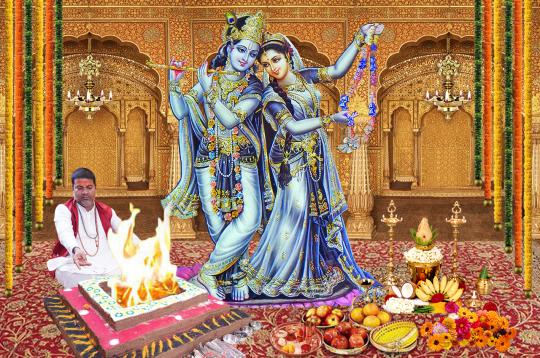
Shri Krishna Janmashtami Maha puja on Krishna Janmashtami for divine grace and blessings of Lord Krishna. The Lord has been gloried in all the Vedas, the Upanishads, the Puranas and other ancient Vedic literature. Performing this puja on Janmashtami is highly auspicious and rewarding. Best for increasing Charisma, self-worth, confidence and individuality, as well as success and growth in career, education and business.
Difference Between Janmashtami and Krishna Jayanthi:
Janmashtami and Krishna Jayanthi both celebrate the birth of Shri Krishna but differ regionally and culturally. Janmashtami is predominantly observed in North India and Maharashtra on the 8th day of Krishna Paksha in Shravana or Bhadrapada, featuring fasting until midnight, Dahi Handi events, and midnight vigils, especially in Mathura and Vrindavan.
In contrast, Krishna Jayanthi is mainly celebrated in South India, particularly in Tamil Nadu and Kerala, also on the 8th day of Krishna Paksha, but with local customs like preparing traditional sweets, decorating homes with Krishna's footprints, and reciting devotional texts. Both festivals share the core celebration of Krishna's birth but reflect distinct regional traditions.

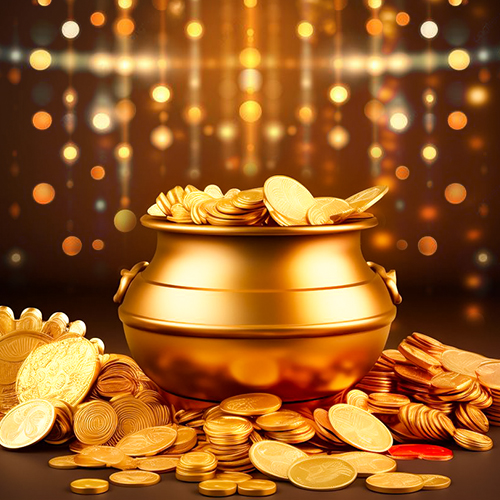
-in-Astrology.jpg)
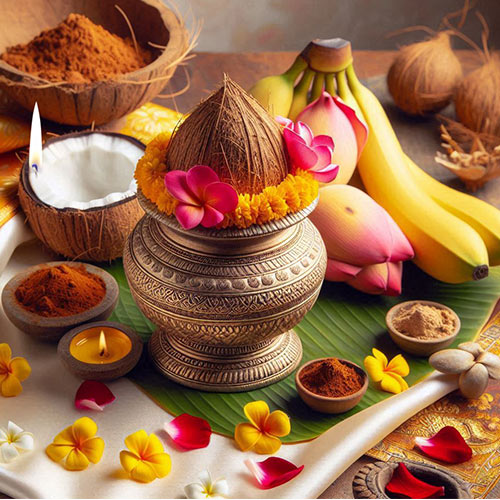
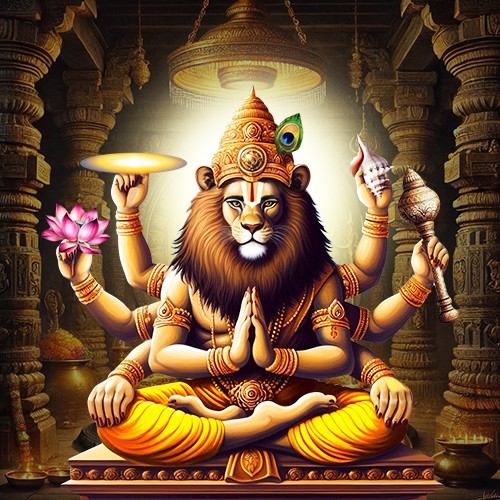
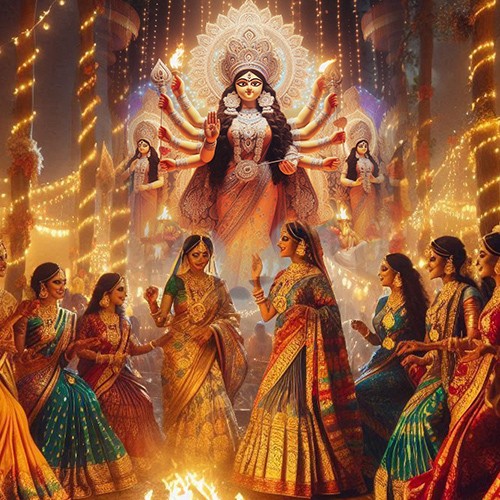
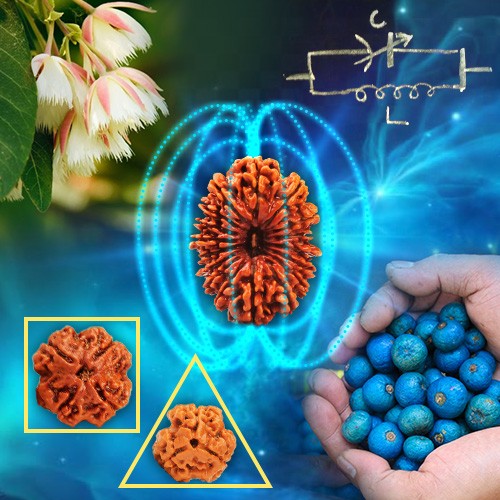

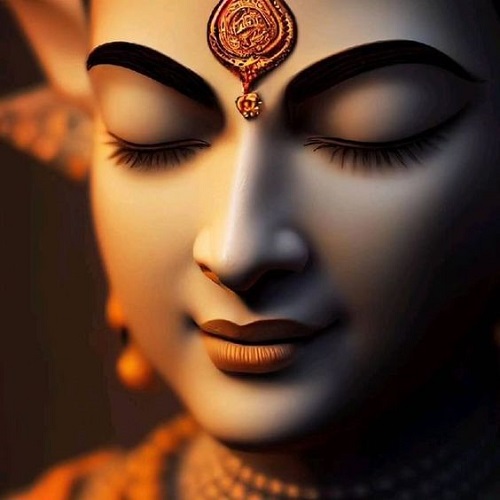
.jpg)
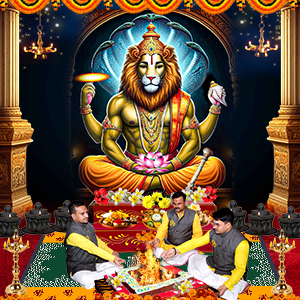
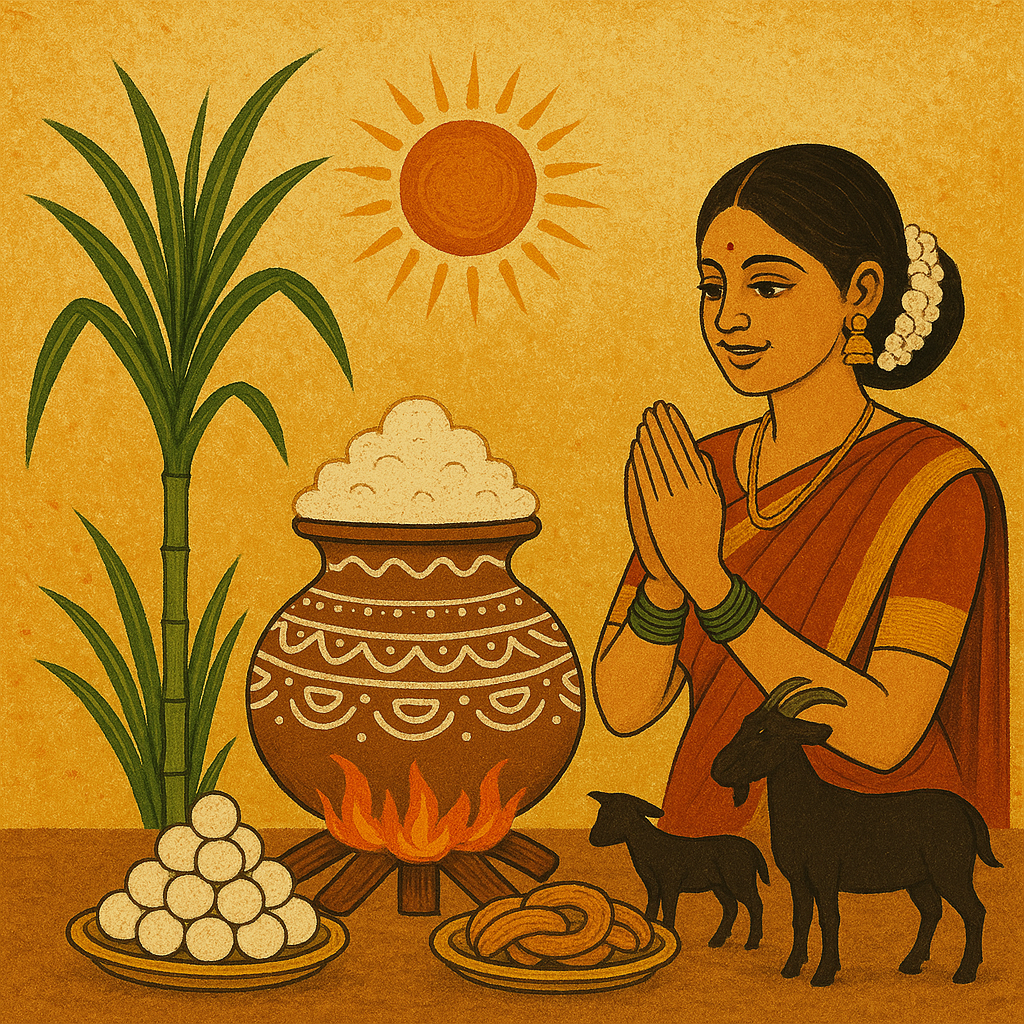

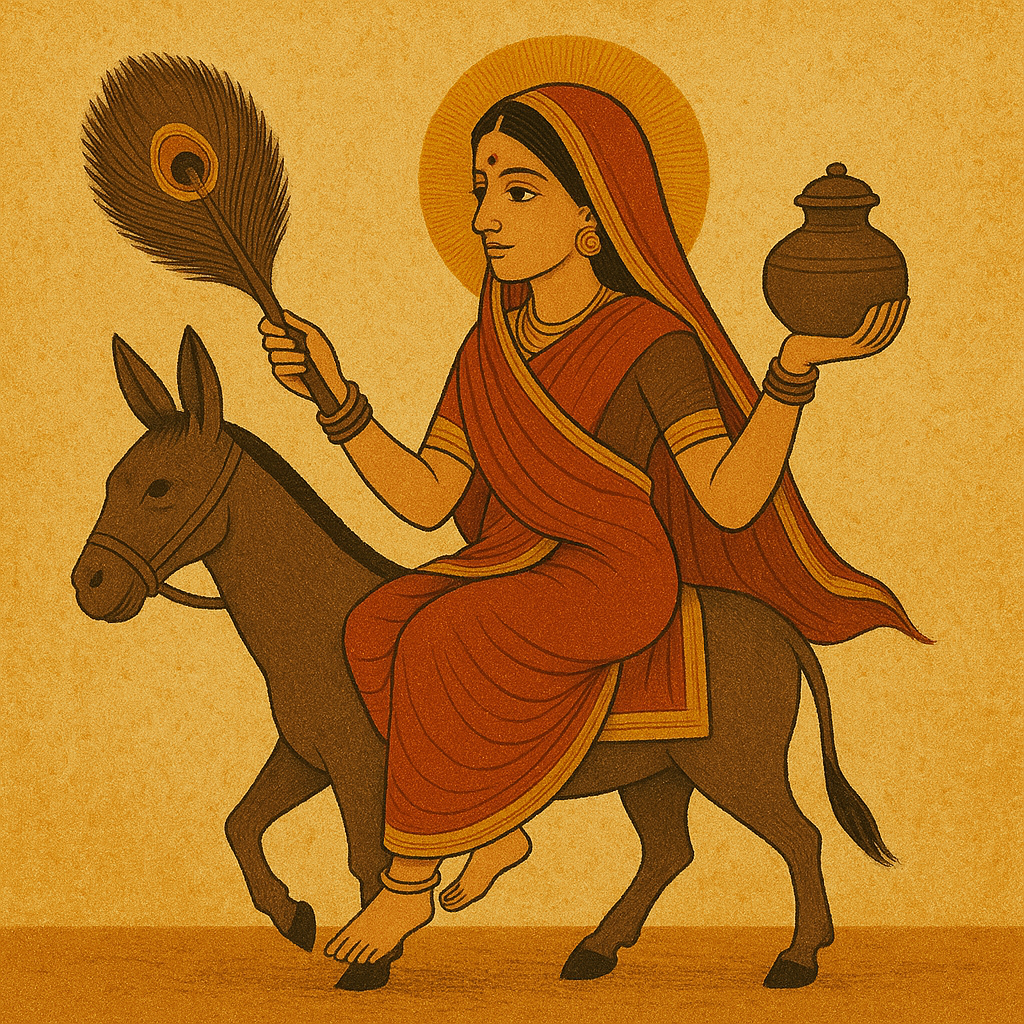
Comments 0
Leave your thought here